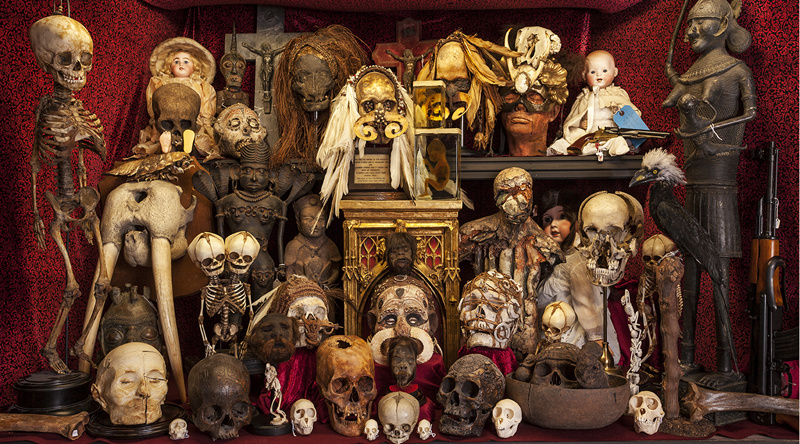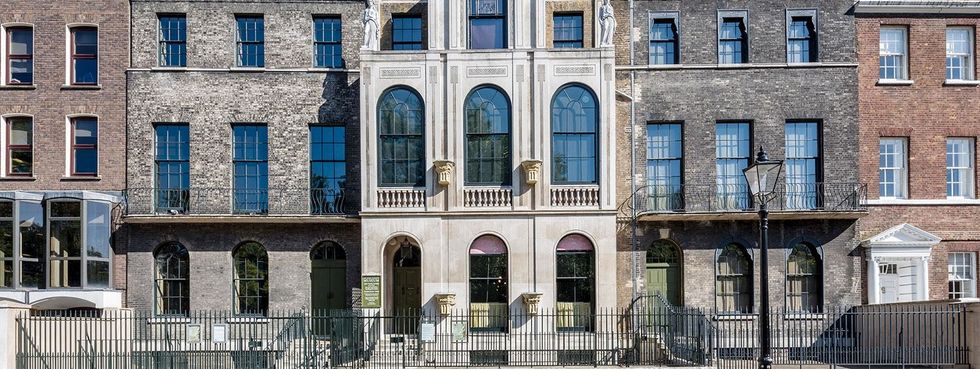
The best smaller museums to avoid the crowds

Who doesn’t love whiling away the hours in a museum? Losing track of time in hushed halls and imagining all those who created the mesmerizing antiquities and artifacts on display is a great way to spend a lazy afternoon. The only problem, of course, is that you’re not the only person with this idea in mind. If you’re planning on seeing a popular museum like The Metropolitan Museum of Art or The National Gallery you’re pretty much looking at Disney-sized crowds, especially on a dreary or weekend day.
But fear not: with hundreds of museums in the US, and thousands more abroad, there are plenty of smaller, less crowded spots just waiting to be explored.
New York hideaways
 The stories these rooms could tell
The stories these rooms could tell
The Tenement Museum is a testament to those who boldly immigrated to the United States in search of a better life for themselves and their descendants. Unfortunately, living quarters for immigrants in 19th and 20th century New York City weren’t exactly luxurious. Most of these people lived in tightly packed buildings known as tenements (often only 25 feet wide and 100 feet long) which were divided up into cramped apartment spaces that often lacked access to natural light and fresh air. The Tenement Museum pays homage to the brave denizens of these overcrowded quarters, featuring guided tours to educate visitors on what life was like as an immigrant in the early days of America. Tours go through seven restored apartments and a German beer saloon located at 97 Orchard Street in the Lower East Side.
 The Wall of Tough Jews (real title of the exhibit)
The Wall of Tough Jews (real title of the exhibit)
Located in a former speakeasy, the Museum of the American Gangster informs visitors about the dark world of underground crime syndicates. From its insidious influence on politics to myths and carefully crafted lore, gangsters and criminals have had a tremendous hand in shaping New York City culture over many decades. The guided tour is a must, as the knowledgeable employees are walking encyclopedias of historic tidbits of prohibition-era underground world.
Philadelphia hidden gems
 It’s best not to visit before or after eating
It’s best not to visit before or after eating
If you’re a fan of medical curiosities, the Mutter Museum will keep you amused for hours. Popular exhibits include a plaster cast of Eng and Chang, the famed Siamese twins, Einstein’s brain, and 139 skulls from Dr. Joseph Hyrtl’s famed collection. Located on a nondescript leafy street in Philadelphia within spitting distance of a Trader Joe’s, this medical oddity museum fascinates over 130,000 visitors per year who pore over the primitive instruments once used to drain “excess bodily fluid” to correct humoral balances.
 Eternal romance captured
Eternal romance captured
The Rodin Museum is another oft-overlooked treasure. Nestled between the Philadelphia Museum of Art and the Philadelphia Free Library, the Logan Square location is a collection of almost 150 bronzes, marbles, and plasters created by the brilliant Auguste Rodin. This formidable assortment is the largest collection of Rodin’s work outside Paris, and has been enthralling visitors since 1929. Take in the casting of The Kiss, one of his most well-known works, or goggle at the outrageous bronze doors inspired by Dante’s The Divine Comedy. If the weather cooperates, take a peek at The Thinker residing calmly outside in the garden.
London’s most overlooked spots
 Little cabinet of horrors
Little cabinet of horrors
When in Rome, do as the Romans do. But when in London, why not carve your own path? Instead of making a beeline straight for the Museum of London or the Tate Modern, spend an afternoon at The Viktor Wynd Museum of Curiosities, where you’ll be able to admire a haphazard accumulation of artifacts that have no relation to one another–other than the fact that they caught the eye of the founder at one point in his life. Taxidermy two-headed kittens, shrunken heads, celebrity fecal matter (seriously) and other oddities fill this so-called Wunderkabinett. Once you’ve exhausted yourself examining the collection, head to the World’s Most Curious Cocktail Bar, where you can indulge in drinks that are almost too artfully crafted to imbibe.
 This was once someone’s home!
This was once someone’s home!
In the 19th century, celebrated architect Sir John Soane started his collection of artwork and collectibles from around the world. He decreed in his will that the home remain unrestored after his death and that all items were to be housed there indefinitely. Luckily for visitors, his ancestors took his edict to heart, which is why today you can tour the Sir John Soane’s Museum. Almost uncomfortably crammed with artwork and antiquities, this beautiful mansion was designed by Sir Soane himself and houses various hidden paintings behind walls (which the guides are all too willing to display to guests). The crown jewel of the museum is an original Egyptian sarcophagus. When viewed on the first Tuesday of the month–when only candles light the museum–you can almost imagine the original occupant, Seti I, resting peacefully inside.
Escape the hoi polloi in Washington, DC
 Enjoy an al fresco experience indoors
Enjoy an al fresco experience indoors
Bypass the crowds at the National Gallery and explore the fascinating National Portrait Gallery instead. It’s most well-known for its America’s Presidents Gallery (showcasing depictions of all 44 presidents, including Barack Obama) and hundreds of photographs and daguerreotypes, but the space itself is half the appeal. Enjoy a snack or coffee in the Kogod Courtyard, an enclosed light-filled space replete with verdant trees and tables for weary visitors.
 35…42…6?
35…42…6?
The Spy Museum is the perfect opportunity to indulge your inner espionage artist. Filled with true-life stories and intelligence artifacts, this unique attraction lifts the cloak of intrigue surrounding the profession. Kick off your visit with a new assigned identity (which you’ll be tested on later) and start exploring the interactive exhibits to help hone your skills. If you want to amp up your game, try an overnight stay where you’ll experience a live-action anti-terror simulation. Even if you’re not a James Bond (or Carrie Mathison) fan, this museum provides for an engaging and imaginative afternoon.
Naturally, this is only a smattering of smaller institutions. The great thing about specialty museums is that no matter how esoteric your interest, there’s probably a museum out there exhibiting treasures only a handful of people can appreciate. So the next time you feel like indulging in some post-school education, try a smaller, quirkier museum on for size. You may be surprised at what you find.



